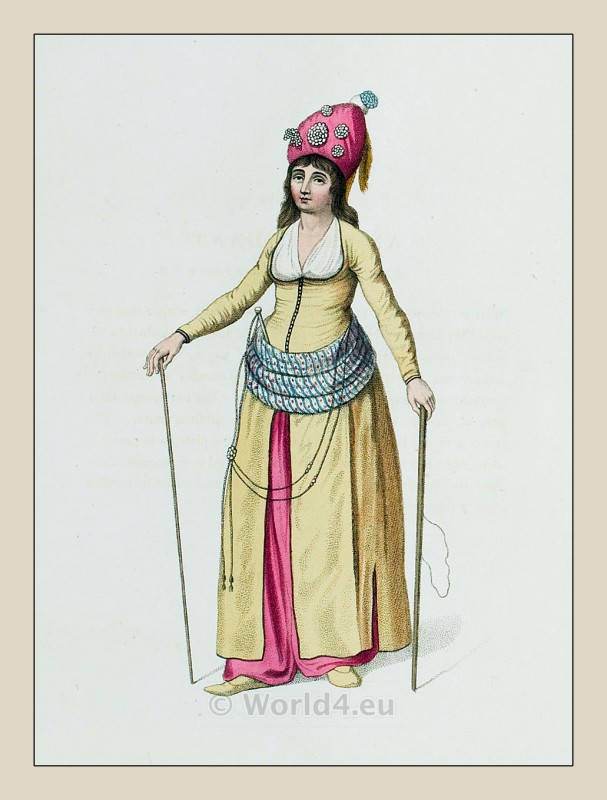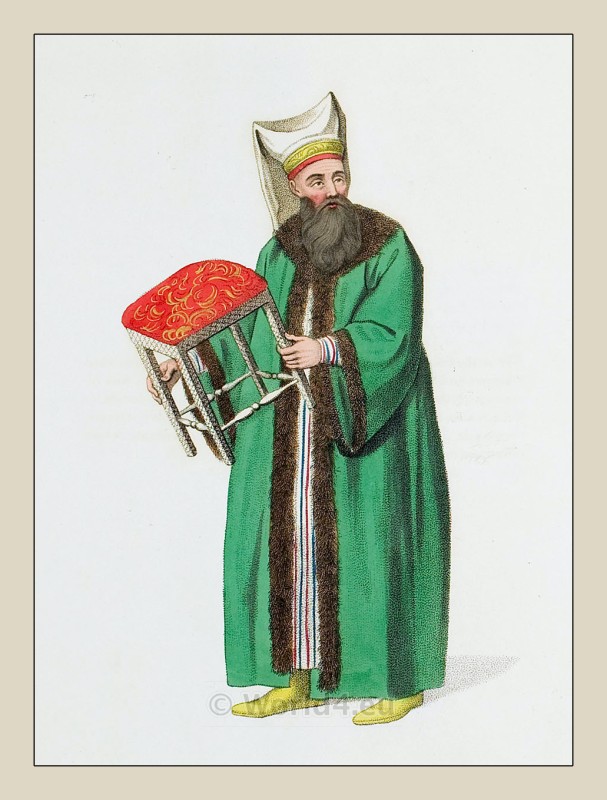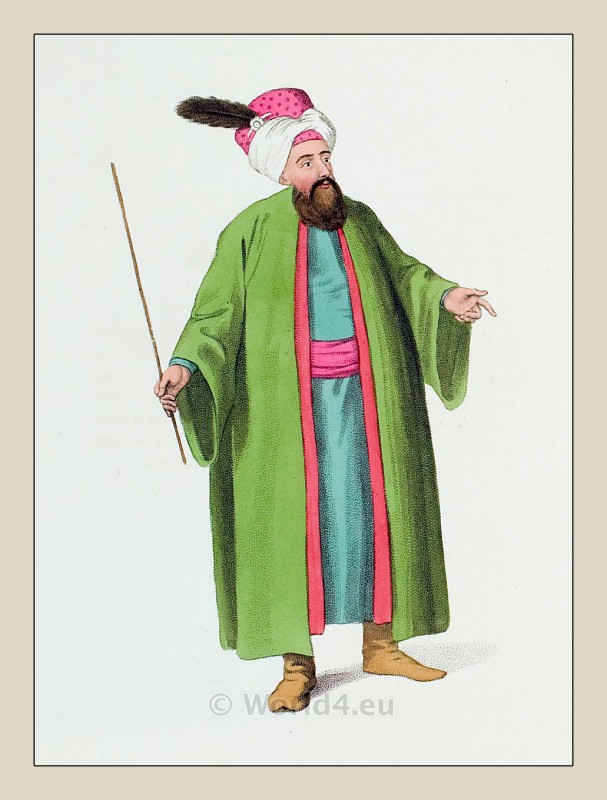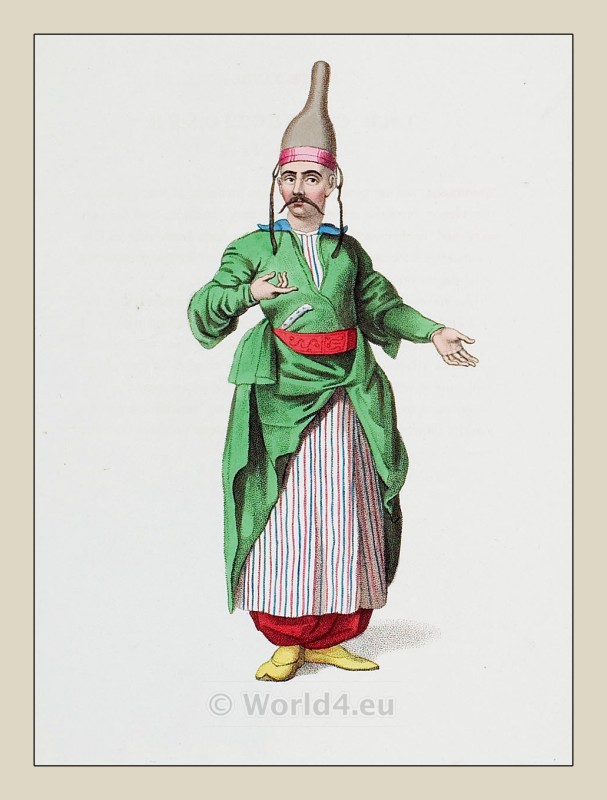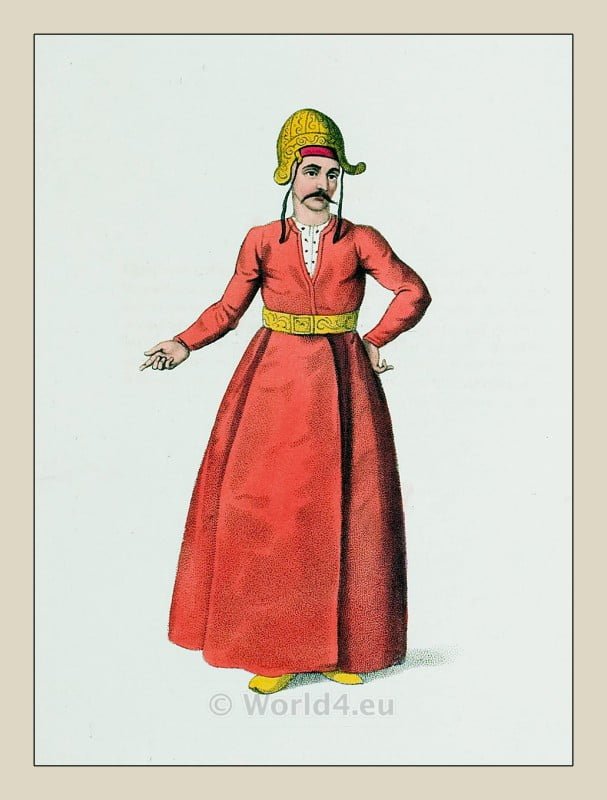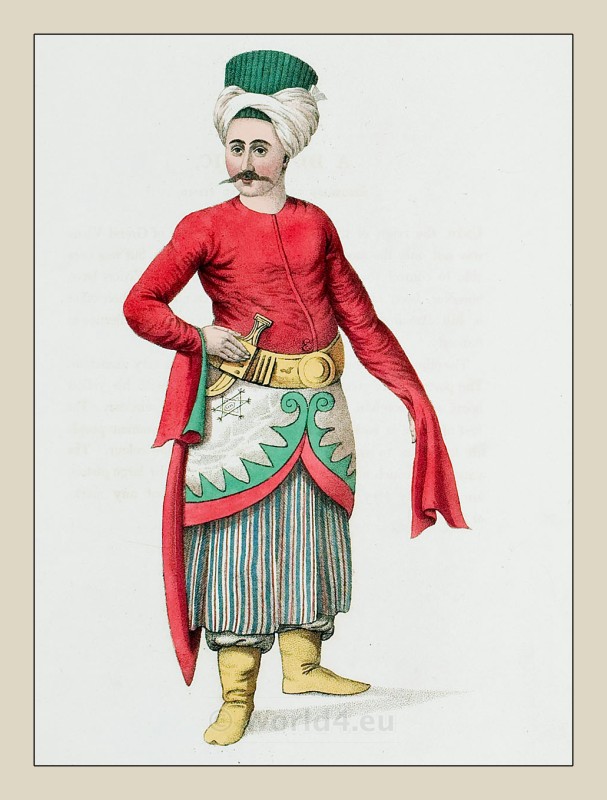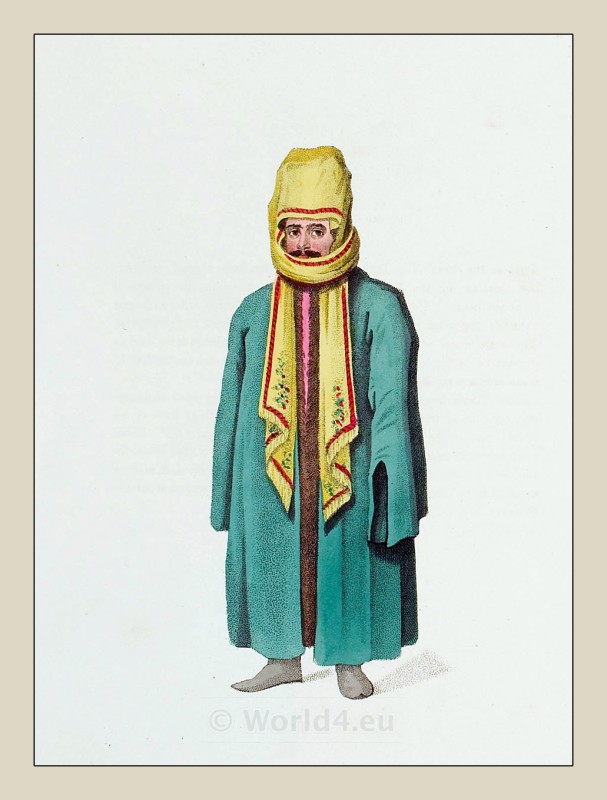Historical Ottoman Empire officials and ethnic groups. On her wedding-day the bride dresses herself in the richest clothes she can procure, and puts on all the jewels and other valuables she is possessed of.
Category: 1804
Costumes and Fashion in 1804
An Attendant of the harem of the Grand Signior. Ottoman Empire.
Responsible for order in the Sultan’s harem. The business of the lady, who is the subject of this plate, is to preserve such order, and to punish the Odalisks
Stool bearer to the Turkish Sultan. Ottoman Empire.
Stool bearer to the Turkish Sultan. (in charge of guarding and carrying the Sultan’s riding stool).
The Chief Usher to the Turkish Sultan. Ottoman Empire.
One of their employments, among others, is to present every one who is introduced at court, or approaches the fool of the throne; and, on some particular occasions, this is done by the chief usher himself.
A Usher at the court of the Turkish Sultan. Ottoman empire.
That body of men, to whom Europeans give the name of Ushers, is of a very great use in the court of the Grand Signior.
The Chief confectioner to the Sultan. Ottoman Empire.
The confectioner to the palace. Chief confectioner of the Turkish Sultan.
An Armenian. Ottoman Empire costume.
An Armenian. Ottoman Empire.
An Ichlogan, servant to the Turkish Sultan. Ottoman Empire.
In the Ottoman Empire, a içoğlan is a young page of the Sultan or a servant of the seraglio recruited by force according to the Devchirmé system. The sultan’s pages were formed in the palace school (Enderûn).
The same term was also used for some members of the Janissaries.
A Domestic. Servant to the Grand Vizier. Ottoman Empire.
A Domestic Servant. The portrait here given is of one in his full dress, with his yellow boots and yataghàn, a sort of curved knife or short scimitar.
A Turk in his chall, or shawl. Ottoman man in traditional dress.
THIS is the dress of a Turk, whenever he ventures abroad on foot: but this, among the higher ranks, is never done in the streets of Constantinople.


